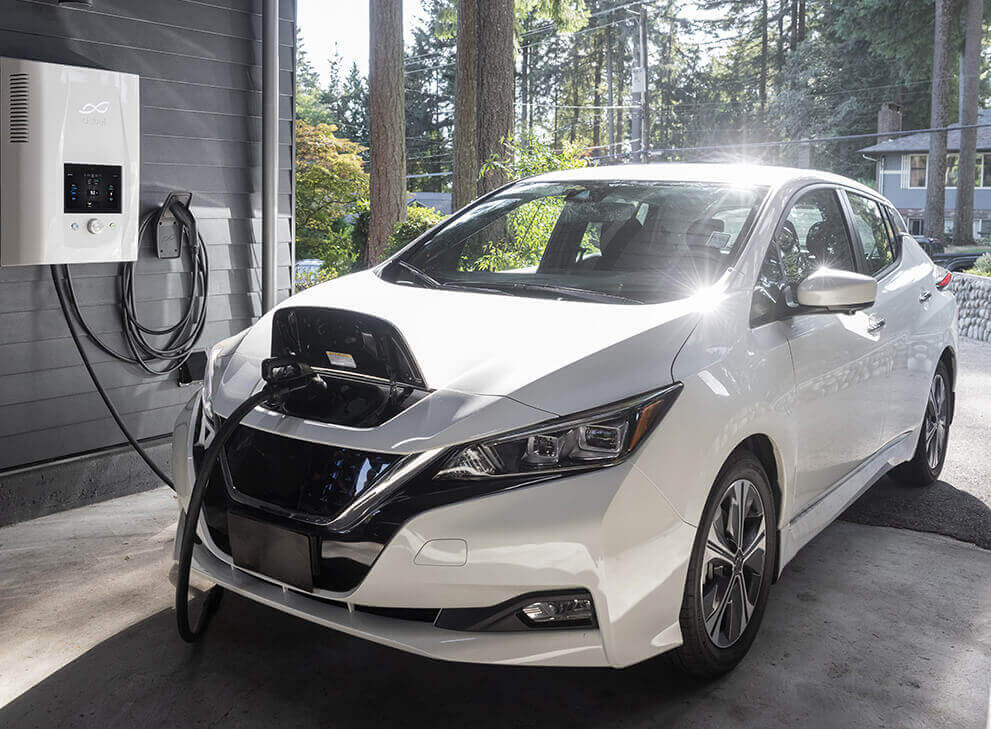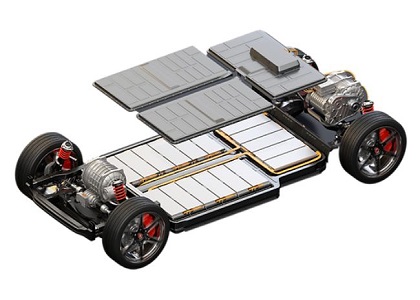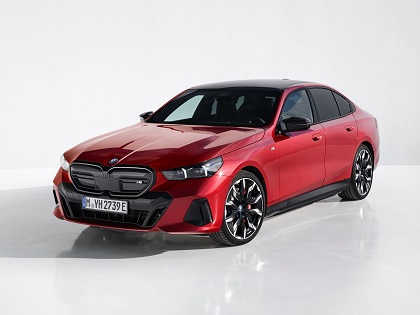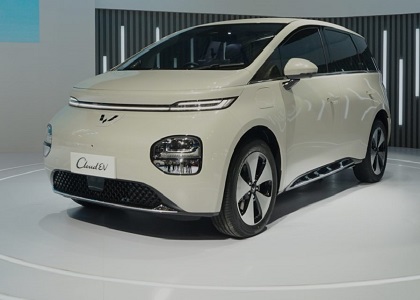
Porsche Electrifies: Macan EV Blends Performance, Efficiency, & Technology
Porsche unveils the all-electric Macan boasting 3.1-second 0-60mph, 381-mile range, and tech-laden interior starting at $78,800.
Following a string of intriguing glimpses at camouflaged prototypes undergoing road tests, the highly anticipated production-spec Macan EV has finally been unveiled. This marks a significant milestone as the Macan becomes Porsche's first mainstream nameplate to embrace an all-electric incarnation. The revelation will mark the discontinuation of the ICE Macan in Europe, driven by the imposition of new cybersecurity laws. The expense involved in ensuring compliance with these regulations was deemed prohibitive. Nevertheless, Porsche plans to maintain the availability of the current Macan in North America and other global markets, with unofficial estimates suggesting a potential continuation for up to two years. Despite the nuances, the spotlight remains firmly on the Macan EV, with a focus on enhancing efficiency and promising performance levels that have been expected out of electric vehicles.
Battery Pack, Range, and Charging
The Macan EV is a ground up electric vehicle, emerging from the VW Group's cutting-edge PPE platform (Premium Platform Electric), which serves as the foundation for the upcoming Audi A6 e-tron and Audi Q6 e-tron. The Macan EV has a 100kWh of gross battery capacity, with 95kWh of usable capacity leveraging a 12-module, 180-prismatic-cell design featuring NMC 811 which all PPE cars will have in common. This innovation results in a 30% increase in specific energy density, enabling the Macan EV to crunch more miles between charges. The 100kWh battery pack remains consistent across both versions—the Macan 4 and Macan Turbo—, with the former serving as the entry point for the Macan EV. The Macan 4 achieves a combined range of 381 miles (613.2 km), while the Turbo version reaches 367 miles between charges (591 km) on the WLTP cycle, surpassing the current Taycan in the market. The 800V architecture enables swift charging, with the capability to reach 10-80% State of Charge in just 21 minutes, attaining peak speeds of 270kW. Furthermore, AC Level-2 charging is supported at speeds of up to 11kW. A notable feature of the system is it can split the battery pack into two separate 400V battery packs, allowing charging speeds of upto 150kW via single cable at 400V charging stations.
Drivetrain
The Macan EV will come with a dual motor setup employing permanent magnet synchronous motors at each axle for both the versions, making it an all-wheel drive. Porsche claims that their electronically controlled Porsche Traction Management (ePTM) system is around five times faster than a traditional all-wheel drive setup and can respond to loss in traction within 10 milliseconds and stabilize the car when it loses grip on tyres. In the standard mode, the Macan EV 4 belts out 382 ponies, and the Overboost mode bumps it to 402 horses with 650 Nm (479 lb. ft) of torque propelling the Macan EV 4 from 0-60mph (0-100 kmph) in 4.9 seconds. Meanwhile, the Turbo version boasts a formidable 630 horses and a staggering 1130 Nm (833 lb.ft) of torque. Again with the Overboost, it accelerates from 0-100kmph in a mere 3.1 seconds, yet maintains a substantial 576 horses in normal mode. Impressively, the Macan Turbo outpaces its natural competitors, the Tesla Model Y Performance and GV60 Performance, with acceleration times of 3.5 seconds and 3.7 seconds, respectively.
Exterior
Like all Porsches, the changes to the body are more evolution than revolution making it easy to identify it as a Macan, albeit with a few changes. There is a new bonnet with bars stretching from behind the headlights all the way to the windshield. The new headlights get a split treatment with four-point day running lights (DRL) above which are reminiscent of the ones on the Taycan and the main headlight unit is placed below. The matrix LED lights will be available, but only as an option. The DRLs give the front a frog-eye appearance and Porsche claims it makes the car feel wide at 1938mm (76.3“). Below the headlights there are air curtains, essentially vents that help to channel air flow into the wheel arches and around the front wheels to enhance aerodynamics. To further enhance the aerodynamics, the body underneath is fully sealed. There is an absence of a grill at the lower half because it does not need one, and lower down there is an air-intake with flaps that will open when cooling is needed, mainly for the radiator perhaps. Being an EV, it gets an 84L frunk/froot (3 cu ft) to store smaller items or charging cables upfront.
Moving to the side, it is again unmistakably Macan with soft lines on the side. The slopping roof and the raked pillar help to mask the size of the car at 4784mm (188.35“). It gets regular pull-out door handles on the Taycan, as opposed to the pull-up door handles, contribute to enhanced aerodynamics in the latter, although the pull-out door handles look fine and do not necessarily convey the need for pull-up door handles. A cool feature worth mentioning is the frameless doors which are double glazed for added insulation and comfort. The Macan EV can be optioned with as big as 22” tyres, however the standard wheel sizes will be revealed later soon. As for the charging port, it is on the left side at the rear three quarters, however the Chinese market will get an AC port on both sides for convenience and the DC only on side. The Macan EV will come with an optional rear wheel steering in which the rear wheel can turn up to 5 degrees to improve maneuverability and lends the Macan an impressive turning radius of 11.1m.
As for suspension, the Turbo version will come standard with air suspension and will be fitted with Porsche Active Suspension Management (PASM) electronic damping control. The dampers in this system use dual valve technology that helps to differentiate the comfort and sport driving modes effectively. The PASM will be an optional extra on the Macan 4 and can be fitted without air suspension. The Macan EV has a ground clearance of 183mm (7.2”) which can be raised to 224 mm (8.8”) with the air suspension. Although the Macan EV will mostly be used on the track, the maximum water wading depth is 338 mm (13.3”) which is again standard for an EV.
At the rear, there is a thick strip of connected taillights with Porsche letters in the taillights which is markedly different from the ICE Macan on sale. This is one area of criticism of the Macan EV as the lights could have been sleeker like the ones on the Taycan, and the rear profile could have been more pleasing to the eye. However the rear is designed for better aerodynamics with the new adaptive spoiler and the louvered rear diffuser that has helped to enhance its range. In terms of practicality, it gets 540L (19.06 cu Ft) of boot space which can further be increased to a cavernous 1348 L (47.6 cu Ft) when required. Overall, the Macan is 4784 mm (188.35”) long, 1938 mm wide (76.3”), and 1622 mm (63.8”) tall.
Interior
The interior is similar in layout to the Taycan with a three-screen layout. There is a 12.6” digital driver’s instrument cluster which is curved. There is a three-spoke steering wheel again similar in design to the Taycan which has a knob on the wheel to adjust different drive modes. Drivers get an augmented reality heads-up display that works in conjunction with the navigation system with arrows which Porsche says appears to the driver at a 10m distance and corresponds in a size of 87” screen. There is a central 10.9” touchscreen powered by the Android Automotive OS (Google based user-interface) enabling users to download 3rd party apps. In addition to the central screen, there is an optional 10.9” screen for the front passenger seat to stream content of choice, and yes, the screen is polarized to avoid distraction to the driver.
There is a strip of LED light above the screens which can serve as ambient lighting and can communicate multiple things to the users such as greeting, charging information, and driver assistance system information or warning. Unlike the Taycan, the controls for the AC are via a physical toggle button which is much better to use on the move. There is a traditional stopwatch atop the dashboard for occasional track days to record lap times a very Porsche touch. Another major change, the front seats have now been lowered by 28 mm and the rear seats have been lowered by 15mm that has enhanced legroom overall.
Pricing and Launch
The Macan will be available in two trims: the Macan 4 and the Macan Turbo, with respective starting prices of $78,800 and $105,300 in the US. The pricing for the Macan Turbo in India has been disclosed at Rs. 1.65 crore ex-showroom India. Currently, Porsche has not officially announced a rear-wheel-drive version, akin to the Taycan, and the potential introduction of such a variant remains uncertain at this point. The Macan EV will be manufactured at the Leipzig Plant, to achieve a net-zero carbon footprint. Anticipated deliveries of the Macan EV to customers are slated to commence in the second half of this current calendar year. Stay tuned for further updates on potential developments.
Image Source
For any inquiries or suggestions regarding the content, please feel free to reach out to us at jash@evlane.net






February 15, 2024
Category: